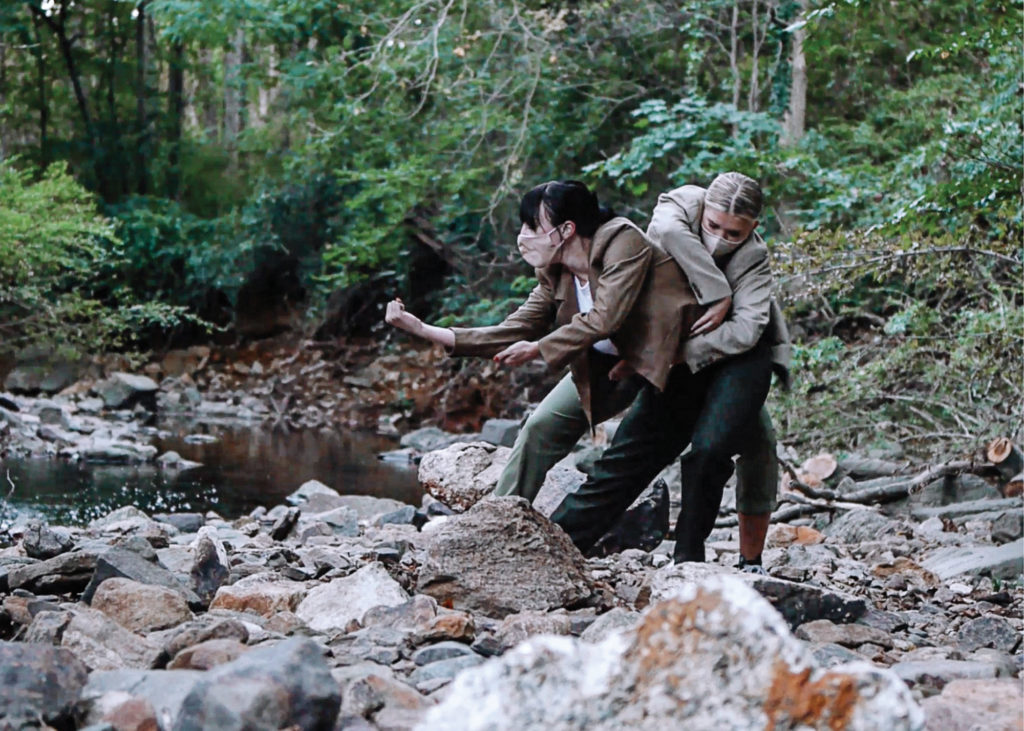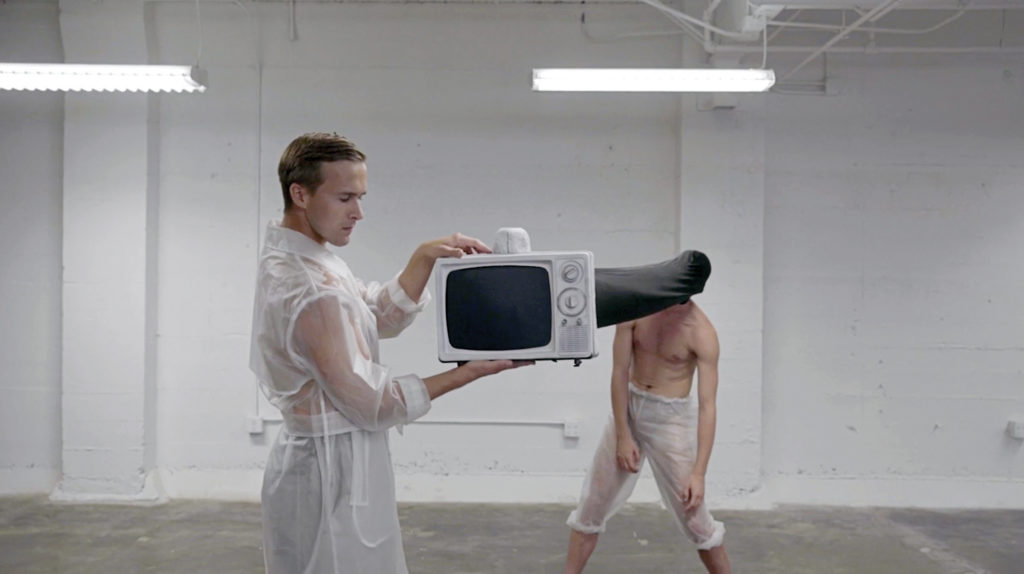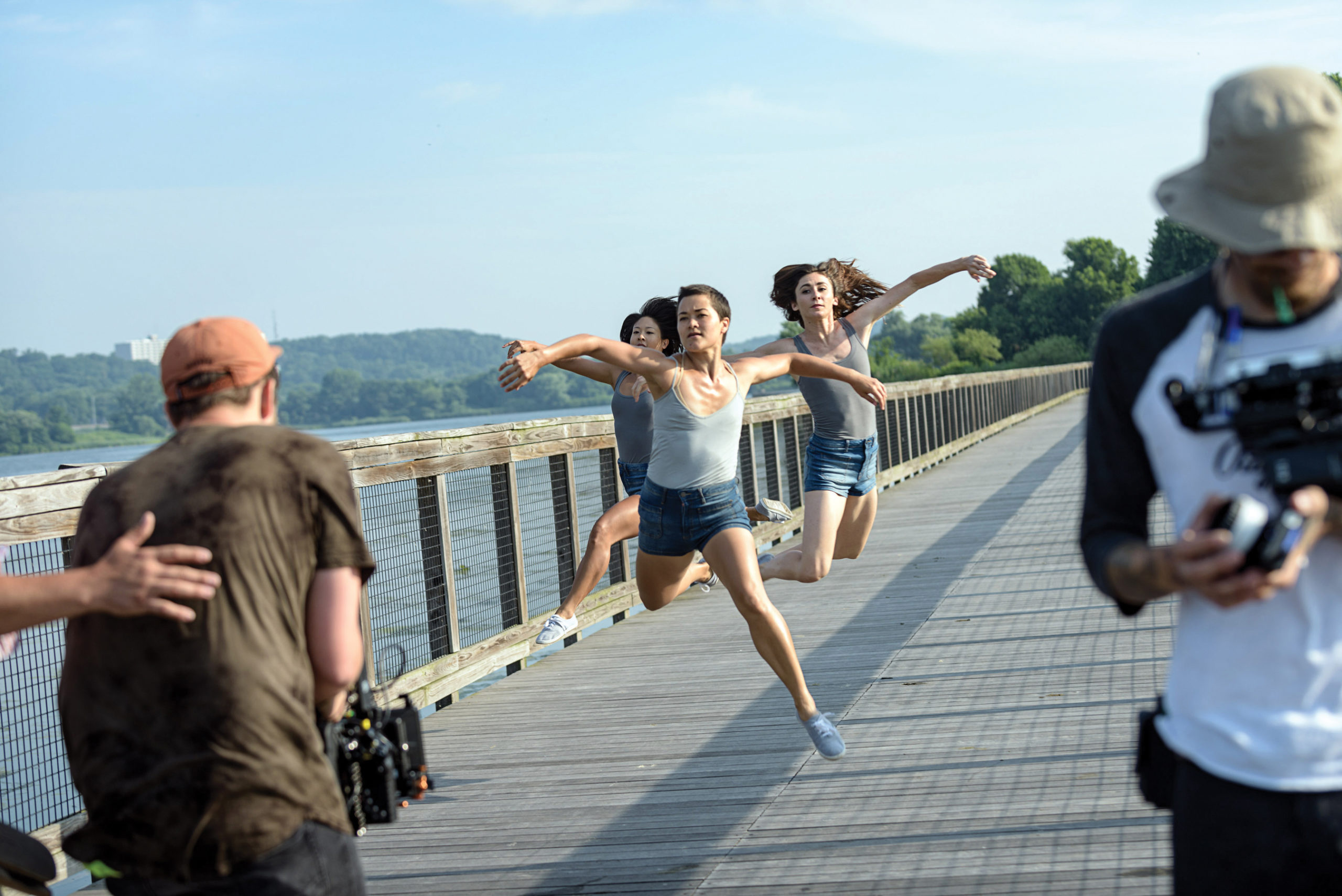As Dance Returns to Theaters, Will We Keep Investing in Screendance?
When Marta Renzi’s 1981 film You Little Wild Heart was featured on public television as part of the New Television Workshop—an initiative of the Boston-based GBH station meant to broadcast experimental works for film—it was an era when dance film seemed to be gaining traction. The trend didn’t last, though. And although other platforms have since emerged, screendance has been marginalized for decades, with many artists making dance for camera as a labor of love—until now.
“For me, the pandemic was a big change—I got hired,” says Renzi. She is a prolific screendance maker with more than 40 films under her belt, but she has generally lost money on her projects. For the first time in her career, the pandemic created the conditions for her to make film works with a substantial budget, provided by organizations like the Island Moving Company in Newport, Rhode Island, for which she directed and edited 2020’s Through Her Eyes: A Newport Nutcracker Reimagined, which has aired on Rhode Island PBS each of the last two years.
Like Island Moving Company, many concert dance troupes were left with few options to save their seasons and, more importantly, their companies during COVID-19 shutdowns. Some opted for site-specific works, but for those without amenable weather, open spaces or, more simply, the desire to stage live works in a pandemic, putting dance online became a natural alternative. Screendance provided an attractive platform to explore new directions for choreographic works. “It’s fun to be able to just show a collarbone and let that be a vulnerable representation of the human body,” says Kyle Abraham, who created two Bessie-nominated films commissioned by New York City Ballet.
For Seattle-based contemporary dance company Whim W’Him, which produced seven films during the 2020–21 season, working in a new medium offered new tools and perspectives. “The films have been a gift in that we’ve been able to keep our dancers employed and keep creating and keep bringing choreographers in and keep our mission going,” says artistic director Olivier Wevers. “It is not the way we imagined it, but we’ve been able to challenge ourselves with the way we do things.”
The challenge now, is how to keep going. “I really believe in live performance,” Wevers says, noting that the company’s latest works are hybrid, giving audience members options to see the work live or online. But he admits that ticket sales are slow for both live and online offerings. Like others, Wevers wonders if the pandemic has left people both screen-fatigued and still unsure if it is safe to gather. Will audiences—and artists—continue investing in dance on film?
Despite the struggles that have arisen, and perhaps in recognition of those struggles, some entities in the dance community have begun to give more acknowledgment to screendance works and their makers. The 2021 Bessie Award nominees included numerous films. “It’s the very first time we have considered any kind of screendance, and it’s been both challenging and exciting because it’s a big new step. But artists are visionary,” says executive director Heather Robles. “As long as they continue to push the envelope, the Bessies is going to keep up with them and honor them in the work that they’re doing.”
Choreographer and filmmaker Janessa Clark’s Communion was nominated for a Bessie, which has meant that her other screendance works are now getting more attention. “I think now there’s a greater appreciation for the craft itself, and the process,” she says. “I just hope that some sort of funding structure can reflect that, so that there can be support to make this work.”
As Philadelphia-based screendance maker Britt Whitmoyer Fishel laments, “I recently received a rejection letter from a grant foundation, and the first line in their feedback read ‘What is screendance? I had to Google it.’ ” Fishel says that artists shouldn’t have to spoon-feed funders information about a form that is so widely practiced.

Currently, there are just a handful of genre-specific grants and fellowships. The Dance Films Association’s annual production grant is one, available to artists across the country at any stage of a project. The San Francisco Dance Film Festival’s Co-Laboratory is another, focused on pairing Bay Area choreographers and filmmakers to create new works.
That said, interest on the part of other funding organizations is growing. The National Center for Choreography at the University of Akron partnered with the San Francisco Dance Film Festival in 2018 to produce two new dance films. “I appreciated that dance film is an alternate form of touring and distribution,” says executive/artistic director Christy Bolingbroke. “What has been painful is the realization that much of the field doesn’t know how to support screendance. We can’t just rely on the labor of the bodies. Now we need the technology, the tools and the know-how.” Bolingbroke and her colleagues are urging their peers to consider what infrastructure is needed for long-term sustainability. “As we see growth within this inter- and trans-disciplinary movement, sometimes funders don’t appreciate the demands in terms of understanding those art forms,” adds Jeffrey Aguiar, director of theater and literature at the North Carolina Arts Council.
Despite a scarcity of resources, artists are paying to submit their films to festivals in an effort to get their work seen. Like a lot of screendance festivals, the Sans Souci Festival of Dance Cinema in Boulder, Colorado, received “a record number of submissions” this season, says executive director Michelle Bernier. When the pandemic began, Bernier was worried about being able to keep the festival financially healthy, and as a strategic move, she and her co-curators expanded the categories to include genres like music video and micro-shorts. “It was a smart move for us,” she says. Like so many festivals, Sans Souci depends on the funds generated from submissions to operate, in addition to grants, sponsorships, community partnerships and donations.
However, the brightest silver lining of the pandemic for Sans Souci is how its community expanded. “All this interest in dance cinema has led to having so many people that want to be interns, volunteers and advisory-board members,” says Bernier. And it isn’t just young people. Bernier says that there are people from all walks of life—students, retirees, business owners—wanting to get involved. She has even been able to teach workshops for participants in their 70s and as young as 7.
Throughout the field, more children are being introduced to screendance. “We turned our dance studio into a production studio, literally creating episodes—like episodes of a show—to continue teaching the kids how to dance,” says Princess Howell Johnson, owner of Royal Expressions School of Dance in Greensboro, North Carolina. Though resources are a constant concern, she sees screendance as one way students can have autonomy in their dance careers: “I feel like becoming a professional dancer doesn’t seem so far-fetched anymore. They can start making their own films and making their own money in their own ways.” Johnson considers TikTok and Instagram to be among the constellation of platforms emerging artists can use to make work, be seen and earn income. “I feel like if you’re not teaching your kids dance on film, then you’re doing them a great disservice.”

Those in the K–12 community seem to agree. While making a full pivot to virtual teaching at Ida B. Wells Academic and Performing Arts Complex in Jackson, Mississippi, in 2020, Bethany Philipp and her colleagues revamped their curriculum to offer all students a composition unit (usually only offered to the highest levels of middle and high school) where students had the opportunity to make solo screendance works. Dawn Schultz, a dance teacher for middle and high school students in Ocean Township, New Jersey, who has been teaching screendance since 2015, found the pandemic gave her a chance to dive more deeply into the practice: As part of the district’s focus on climate change, “I had them collaboratively do research, and then individually create choreography based on words and images, and put it on film,” she says.
The benefits of studying screendance can be seen all the way into higher education. Though not all collegiate programs offer it as a course—or, more rare, a degree track—academia is where much of the theory of screendance has been fostered, and where many of the field’s veteran practitioners have found support. “I think if choreographers can learn the visual language of cinema, we might make more accessible stage work,” says Ray Schwartz, who teaches screendance at the Universidad de las Américas Puebla in Mexico. “I’m interested in how the act of studying screendance will have an effect on live dance.”
Kristi Vincent Johnson, the director of dance at North Carolina Central University sees potential for screendance as a vehicle for the growth of her program. “Screendance is a wonderful way for the students’ work to get submitted to festivals, bringing the program more notoriety as well as giving them an opportunity to perform for national or international audiences,” she says.
For some professionals who’ve been hit by COVID layoffs, screendance can offer an enticing next chapter. Stephen K. Stone, for instance, is now considering filmmaking after his career at the University of Arkansas comes to an end with the university’s decision to cut the dance program. “You know the saying: ‘Sometimes seemingly unhappy endings are actually beautiful beginnings,’ ” he says.
Perhaps screendance is finally on the verge of being recognized as its own genre, with its own merits, instead of being an “alternative” to live performance. Maybe one day the history and techniques of screendance will be viewed with as much reverence as live performance, and artists (all of them!) will feel validated in their career choices because they are cheered on and subsidized. One thing is for sure: Screendance will survive the pandemic and will be there to delight audiences even when theaters are fully open once more. Let’s not let it slip into the margins again.




